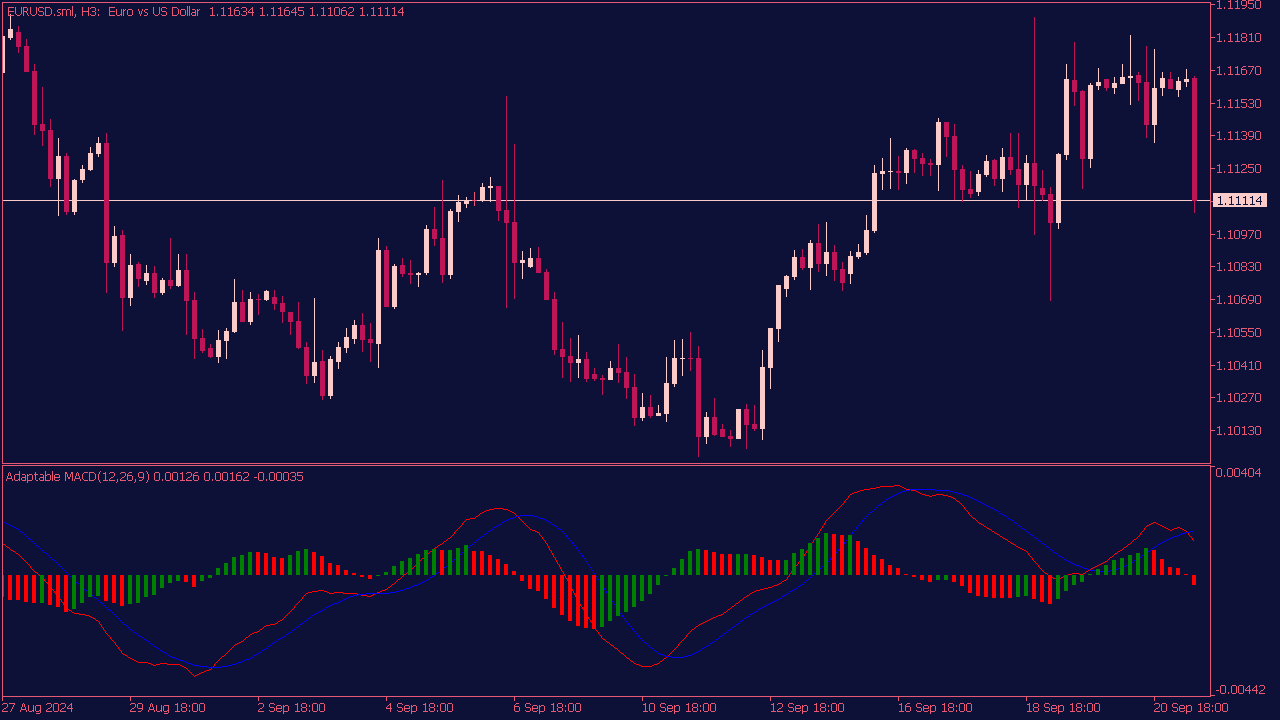Interactive Forex Book
1.1. MACD (Moving Average Convergence Divergence)
The MACD (Moving Average Convergence Divergence) indicator is a popular momentum and trend-following tool used in technical analysis to gauge the strength and direction of a security's price movement. Developed by Gerald Appel in the late 1970s, the MACD is derived from the relationship between two moving averages of a security's price, specifically the 12-day and 26-day exponential moving averages (EMAs). The MACD line itself is calculated by subtracting the 26-day EMA from the 12-day EMA, which allows traders to observe the convergence and divergence of these averages. The resulting MACD line oscillates above and below zero, with positive values indicating upward momentum and negative values indicating downward momentum.

A key component of the MACD is the Signal line, which is typically a 9-day EMA of the MACD line itself. This line serves as a trigger for buy and sell signals; traders often look for crossovers between the MACD line and the Signal line to identify potential entry and exit points. When the MACD line crosses above the Signal line, it's considered a bullish signal, suggesting a potential buying opportunity. Conversely, when the MACD line crosses below the Signal line, it's interpreted as a bearish signal, indicating a possible selling opportunity.
In addition to the MACD line and Signal line, traders often utilize the MACD histogram, which represents the difference between the MACD line and the Signal line. This histogram helps visualize momentum and can provide further insight into the strength of a trend. A rising histogram indicates increasing bullish momentum, while a declining histogram suggests strengthening bearish momentum. Additionally, the histogram can help identify potential reversals; for instance, if the histogram shows decreasing height while prices continue to rise, it may signal weakening strength in the upward trend.
The MACD can also be used effectively to spot divergences, which occur when the price of a security makes a new high or low that is not mirrored by the MACD. For example, if the price is making higher highs while the MACD is making lower highs, this results in a bearish divergence, suggesting exhaustion of the current trend and a potential reversal. Conversely, bullish divergence occurs when the price makes lower lows while the MACD records higher lows, indicating a potential trend reversal to the upside.
Interpreting the MACD requires a nuanced approach. While crossovers and divergences provide useful signals, traders must also consider other factors, including market context, price action, and additional technical indicators. The MACD works well in trending markets but can generate false signals in choppy or sideways markets. As such, many traders use the MACD in conjunction with other tools, such as support and resistance levels or volume analysis, to confirm signals and reduce the risk of false entries.
One limitation of the MACD is its lagging nature, as it is based on moving averages that reflect past price movements. This can lead to delayed signals, particularly in fast-moving markets. Consequently, traders often adjust the parameters of the MACD (changing the periods of the EMAs) to suit their trading style or the timeframe they are addressing. Additionally, while the MACD can be a valuable tool for identifying momentum and trend strength, it is crucial to use it as part of a comprehensive trading strategy that includes risk management and analysis of market conditions.
Ultimately, the MACD indicator is a versatile and effective tool for traders seeking to identify potential trading opportunities in the financial markets. By providing insights into momentum, trends, and potential reversals through various components (namely the MACD line, Signal line, and histogram) it helps traders make informed decisions. However, like any technical analysis tool, it is vital to combine the MACD with other analysis methods and proper risk management to maximize its effectiveness and improve trading outcomes. This comprehensive approach enables traders to navigate the complexities of the markets, enhancing their ability to capitalize on trends and manage risks effectively in pursuit of successful trading strategies.